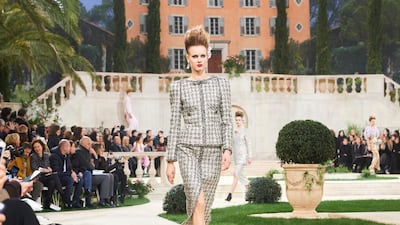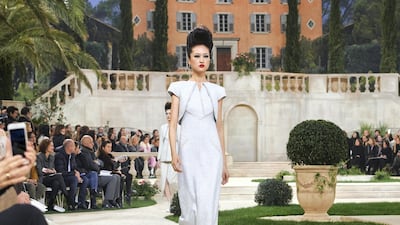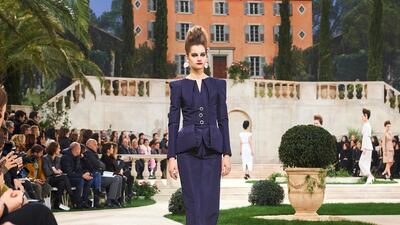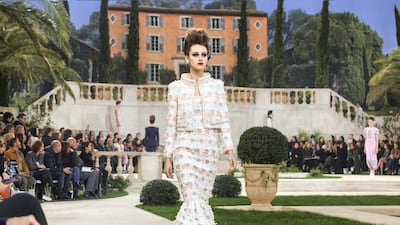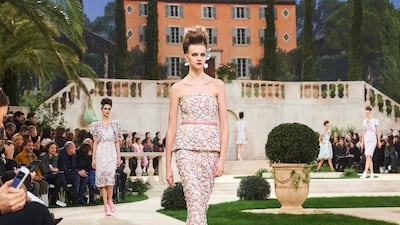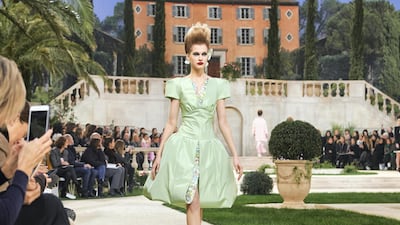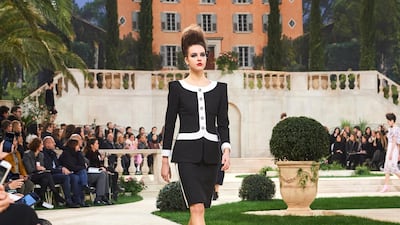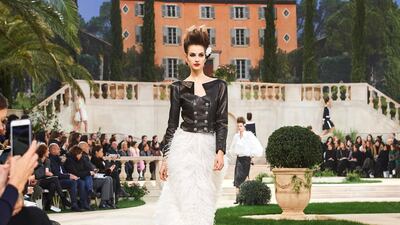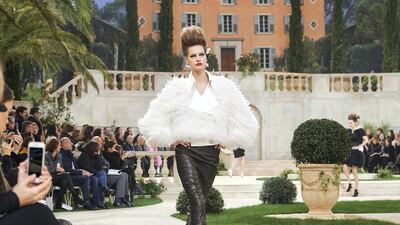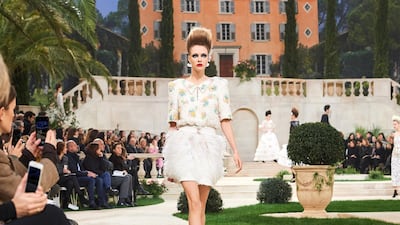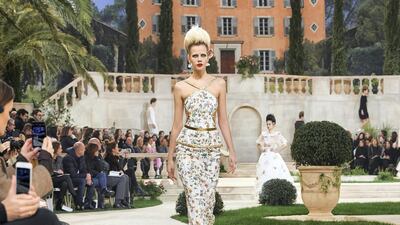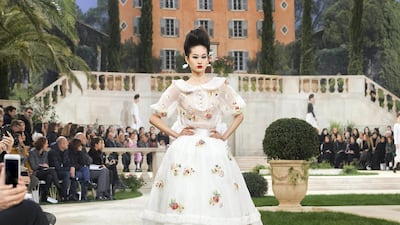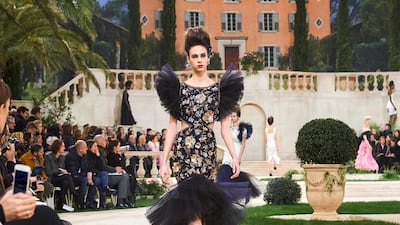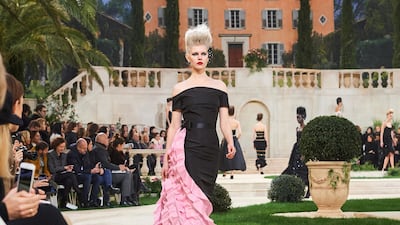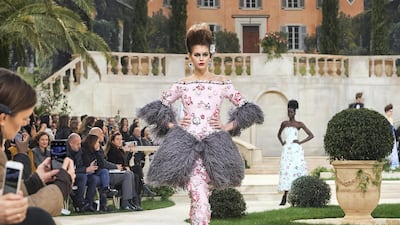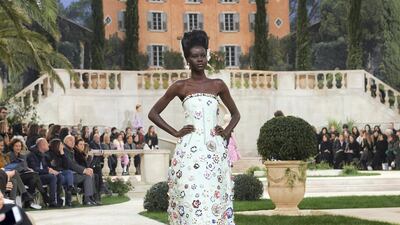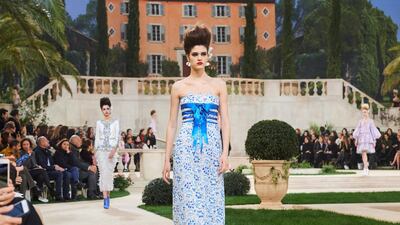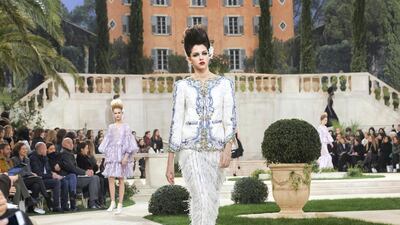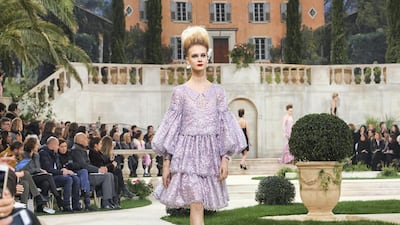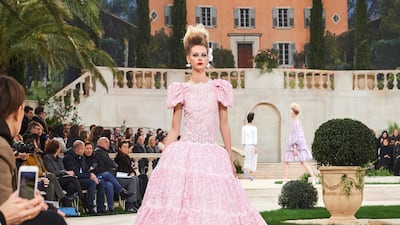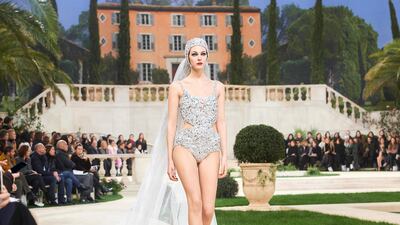Haute couture is the high point of the fashion season, and the highest expression of skill, craft and exceptional know-how that a fashion house can aspire to. Of the few select maisons with the ability to create couture, Chanel is the oldest still in existence and, as such, stands as the de facto focal point of the biannual, three-day couture showings in Paris.
With its unexpected stages and sublime collections, Chanel is famous for its elaborate runway shows, and the audience eagerly awaits the customary bow from the brand’s artistic director, Karl Lagerfeld, at the end of each presentation.
Lagerfeld was a no-show
However, the spring/summer 2019 haute couture show held in Paris a few days ago broke with that tradition as, for the first time, Lagerfeld did not appear. Since taking over the house in 1983, Lagerfeld has stood with the couture bride at every finale, but this time it was his second-in-command, Virginie Viard, director of Chanel's creative studio, who appeared. While it was good to see more of the extensive team without whom couture is not possible, Lagerfeld's unexpected absence dampened the otherwise ebullient spirits of a charmingly youthful collection.
Inside the Grand Palais
To set the tone for this show, Chanel constructed a Mediterranean paradise inside the Grand Palais in central Paris, offering a surreal respite from the snowy climes outside. A grand Italian villa overlooked a pool, edged with real grass, surrounded by poplar, palm and orange trees, and framed by high walls painted the colour of a Sicilian sky. As models came down a noble-looking double staircase, the audience was transported to a whole other place and offered a peek behind the curtain into a charmed life.
For inspiration, Lagerfeld once again looked to his favourite era, the 18th century, which was alluded to with pastel tones and voluminous skirts. Every model sported upswept hair that nodded to both Madame de Pompadour and Queen Marie Antoinette. Far from a literal facsimile, however, this was a discreet suggestion of the original, brought up-to-date with thick black eyeliner and a slick of vermillion on the lips.
Seemingly dispensing with collars for spring, Lagerfeld instead offered boat necks of every width, curving from shoulder to shoulder or skilfully folded back to create faux boleros. A procession of silk dresses arrived in the colour of sugared almonds – icy blue, pale lilac and pistachio – and encrusted with tiny ceramic flowers, tucked inside elaborate folds that mimicked trompe l'oeil pockets, jackets and even bubble skirts.
Intricately woven Chanel tweed appeared as severe columns, with knee-length jackets set over long tailored skirts for sultry sophistication, or lightened with kick flare pleating hanging from the knee. One suit came trimmed with tulle, now shredded into feathery threads that sat as small puffs around wrist, hem and neck.
Made in 31 rue Cambon
Entirely handmade, every piece was created at the fabled 31 rue Cambon in Paris, Chanel's home since 1918. The building houses Lagerfeld's studio, Mademoiselle Chanel's spectacular chinoiserie apartment, and the legendary ateliers that cover two floors and are divided into two specialities. First is "flou", meaning to work light and fluid fabrics such as silk, crepe and tulle, while "tailluer", or tailoring, deals with heavier materials such as wool, leather and tweed.
Invited to visit the atelier just one day before the show, I braced myself for frantic urgency and deafening noise, with teams racing to finish everything on time. Instead, I found the petite mains (as the seamstresses are poetically called), sitting quietly at vast cutting tables, working in an amiable silence broken occasionally by soft murmurings. With the show barely hours away, dresses still lay in pieces, being worked on by experienced hands that moved as if they had all the time in the world.
One pink net top, caught in diamond pleats, and a skirt embroidered to resemble tweed, sat silently on a mannequin, as elsewhere the finishing touches were added to its matching jacket. Another mannequin carried the pristine white pleats of the dress and jacket that would turn out to be look 40. Being couture, of course, these were not just pleats, but fine strips of fabric hand-pieced and trimmed with lace. The only clue to the extent of work was a small label that read "do not touch", highlighting the fragility of these all-white looks, and how difficult it is to keep them immaculate when even a needle leaves a mark.
On another table sat a fully sequined dress covered with trailing flowers that was having a gold leather trim attached to it, while elsewhere two seamstresses worked patiently on the black tulle bolero of look 34, piecing on the sleeves in no particular hurry. The matching skirt – a short tutu of yet more tulle – was being handstitched by one woman, while another quietly followed, snipping off loose threads. On another table, a dress was being lined with silk, its outer layer covered completely in minute and fragile porcelain flowers. Everywhere I looked, zips were being discreetly hidden behind handwoven braiding, or embroidered flowers were being hand-cut to cover seams.
Completed in six weeks
Given the attention to detail, it is astonishing to learn that the ateliers have just six weeks to make each collection, working to surprisingly unkempt sketches by Lagerfeld himself. Having trained as a couturier, Lagerfeld understands the techniques required to bring his creations to life, and annotates the drawings to better guide his teams, even specifying the types of buttons he wants.
While in the past few seasons the designer has played with a rounded shoulder, this spring, he favoured a squarer shape that jutted out of evening jackets embroidered with flourishes of Delft china, or severely chic black tweed jackets for daywear. More volume arrived, courtesy of feathers made into great shaggy culottes paired with a polished leather jacket, or as a fluffy blouson over a starkly bias-cut leather skirt.
For evening, Lagerfeld offered a strapless tube of black gathered silk, caught with bands of golden beading, and a cutaway dress garnished with real petals dipped in resin, and finished with great starchy plumes of black tulle at the shoulders and hem.
The silhouette of the 1700s appeared (briefly) via a pretty mousseline dress sprinkled with posies, and a strapless dress in eau de Nil, its full skirt encrusted with yet more porcelain flowers. Another iteration came as tiered lace dresses, hand-painted and flaring dramatically from the hips, but cut short at the ankle, a la Marie Antoinette’s milk maid.
A finale with a twist
The finale to every couture collection is the bride, but even here, Lagerfeld opted to add his own twist. Model Vittoria Ceretti was sent down the runway clad in a couture swimsuit and cap, heavy with silver sequins and a 20-foot gossamer train.
With the final bow taken by Viard and not Lagerfeld – an announcement later explained the designer felt "tired" – it was a bittersweet end to a spectacular show. Fresh, pretty and delightfully executed, the clothes were sublime, as was the experience of watching them sashay around a make-believe world inside the Grand Palais. It was just sad that the man who envisioned the entire illusion was not there to savour the magic.
